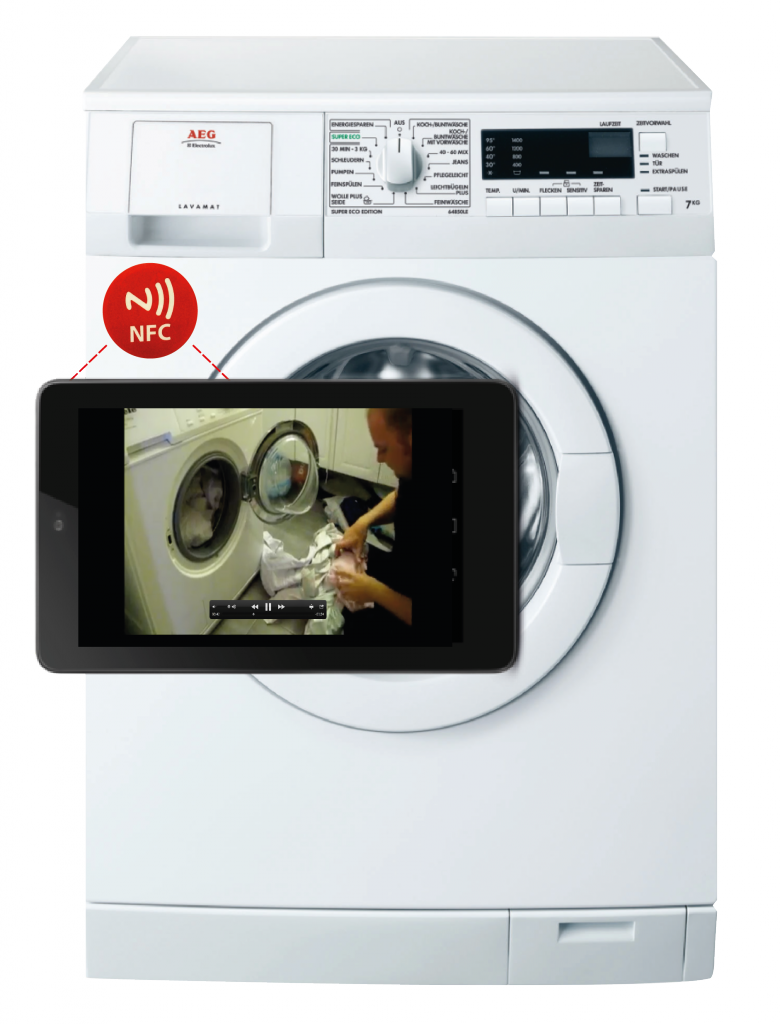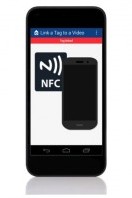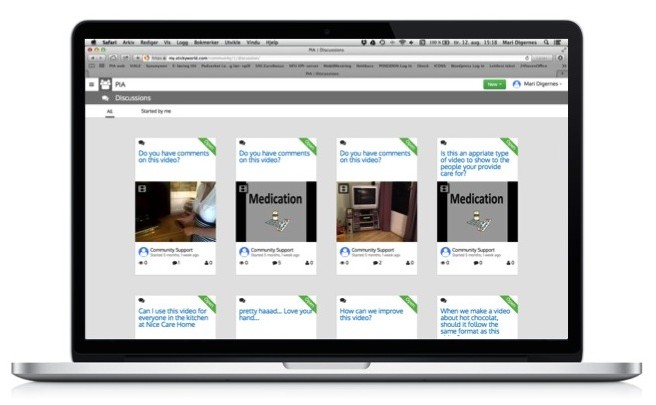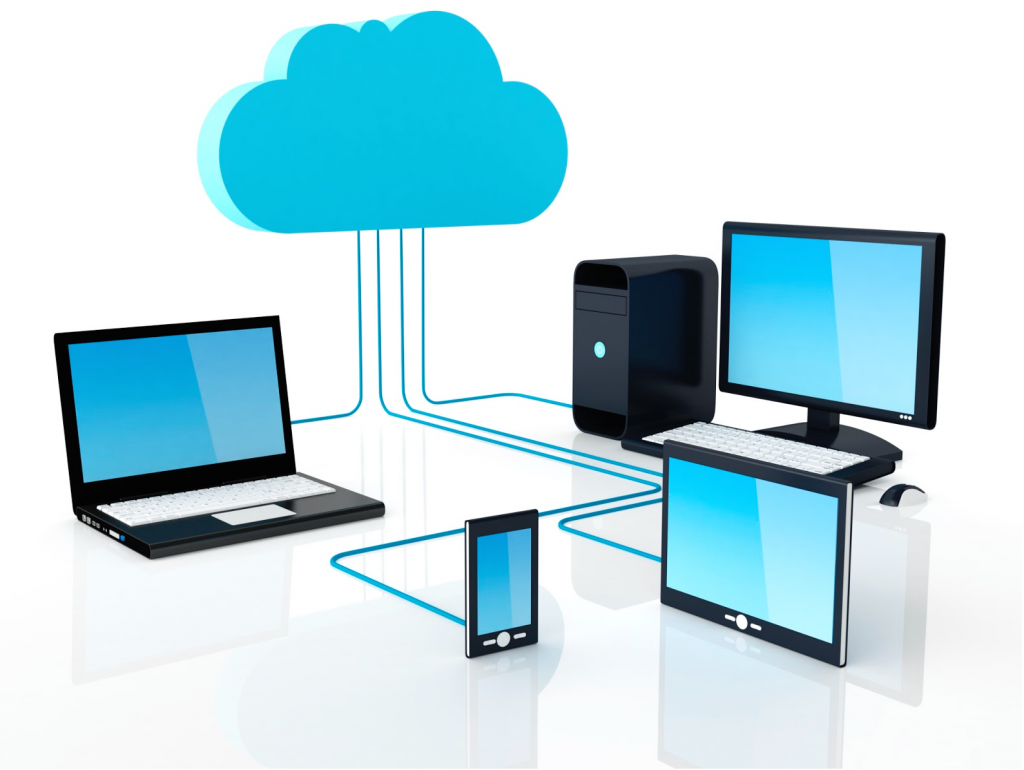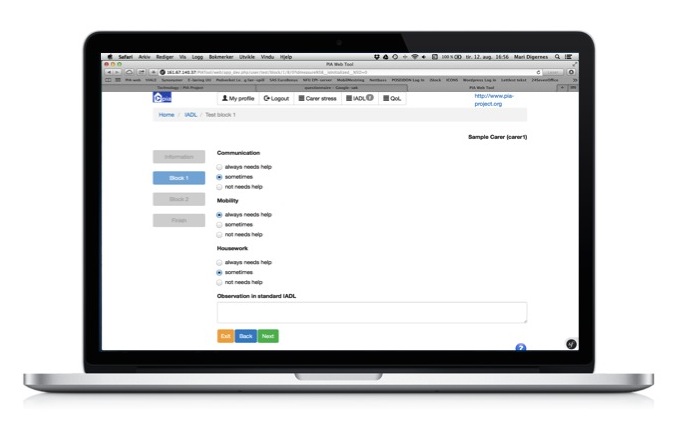A core technology of the PIA system are the NFC tags. These are placed on items and trigger the playback of the instructional video related to that item when scanned with a mobile device.
Near Field Communication (NFC) is a form of short-range wireless communication. Read more about NFC-tags.
PIA’s main technological innovation lies in how we combine and integrate different technology and services around the central NFC-instruction concept.
Sub-systems
The PIA project has four technology partners who each contribute a sub-system to the PIA solution:
Ulster University’s SERG group develops the mobile application running on phones and tablets. This interacts with the NFC tags, as well as communicating with the other sub-systems over the Internet. It can be used by carers and other secondary users to record videos and assign them to tags, and by primary users to play videos based on proximity to tags.
Another key sub-system is the video sharing and social network service, developed by Stickyworld. This provides a web application to carers and other secondary users, where they can set up communities to share and discuss instructional videos. Videos can be uploaded from the PIA mobile application, or from any computer through the web, and the videos will be stored in the cloud so they can be played on any device where the user has logged in.
Tellu contributes a server-side sensor processing sub-system, so that administration of tags and their assignment to videos can be moved away from the mobile device and into the cloud, available anywhere through a web application. In this web application, it is possible to set up more advanced logic, such as a tag triggering different videos at different times of the day. This sub-system also tracks usage and can send notifications to carers.
The last administrative sub-system is developed by the MAmI research lab at the University of Castilla-La Mancha. This is the analysis web tool, which collects information from the other sub-systems and through forms. It is a tool to create forms and analyse data, to measure Quality of Life, carer stress and other parameters.
All together, the PIA sub-systems create possibilities for carer organisations to manage large-scale deployment of the care technology, with central administration and monitoring.


